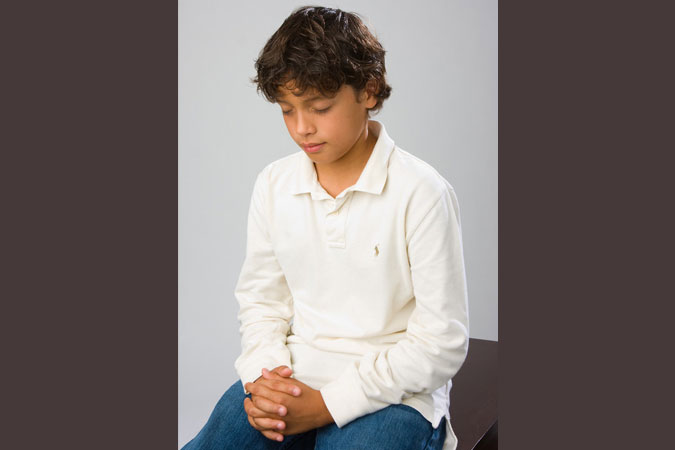
We had just finished a silence challenge, and I called the young people to our regular opening prayer when I was disheartened to hear one boy mumble, “What, we’re not done with prayer yet?”
Prayer time is usually not met with such resistance in my classroom. In fact, I think many of the young people enjoy the quiet and reflective experiences built in to our time together, whether they are able to vocalize it or not in front of their classmates. (Remember, this is a group of junior-high students for whom religion is not normally a cool topic of conversation.) But this one boy’s reaction stuck with me nonetheless. I don’t expect everyone to appreciate every form of prayer, but I do make a point of providing the young people with multiple opportunities for prayer, not only across the span of the year but also within each session. Here is a quick inventory of some of the prayer styles I’ve introduced into my classroom:
- Traditional prayers—We begin each session with the Lord’s Prayer, Hail Mary, and Glory Be. And we’ve done prayers such as the Act of Contrition and Acts of Faith, Hope, and Love.
- Guided reflections—With the help of scripts and recordings from the Finding God program, we’ve prayed several guided reflections. These introduce the young people to the idea of using their imaginations in prayer and having conversations with Jesus as a friend.
- Lectio divina—A traditional method of praying with Scripture, lectio divina finds its way into several sessions throughout the year.
- Praying with art—Again the Finding God program helps here, as I can display an art print and use that as inspiration for prayer time with the young people.
- Litanies—Whether a traditional litany of the Church or one created to match the needs of the class in front of me, the repetition of a litany appeals to some students more than others.
- Stations of the Cross—I discovered a few years ago that leading a classroom experience of the Stations of the Cross is a fruitful way to spend some time in Lenten prayer.
- Rosary—Given time constraints, when I introduce the Rosary I invite the young people to pray only one decade in class. I select a mystery to focus on that matches the theme of the session, such as calling attention to the Sorrowful Mysteries during Lent and reflecting on the Agony in the Garden during a session near Holy Week.
- Prayer of petition—Our Advent Prayer Grab Bag is one way to help young people understand prayers of intercession and call attention away from their own needs only to the needs of the wider Church.
- Prayers by and to saints—Many saints and other holy people have composed prayers that fit nicely into various sessions. And selected prayers that ask for the intercession of saints also find a place in the classroom prayer roster.
- Mass prayers—This year our parish has come together for several teaching Masses in which the priest explains our prayers and actions during our communal worship.
- Silence challenge—During Lent I like to issue a silence challenge to the young people. For at least 40 seconds each day, they practice being completely silent with God.
- Music—Playing either songs with words that speak to the session or gentle background music for reflection speaks especially to those participants who have musical intelligence.
- Daily Examen—This prayer popularized by St. Ignatius of Loyola invites us to reflect on our day and see where we were closest to God or not as close as we’d like. There are traditionally five steps, and the prayer takes about 15 minutes, but simplified versions work with younger children or when time is at a premium.
I take my student’s point in recognizing we pray a lot during our gatherings. We absolutely do, but the response to his lament is, “No, we’re not done with prayer—and we never will be!” If a sense of that gets through to at least some of the young people, we’re well on the way to forming disciples.
What are your favorite ways of praying with young people? How do you incorporate a variety of prayer styles in your classroom?





Be the first to comment